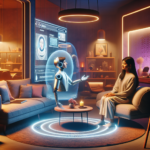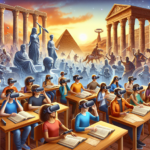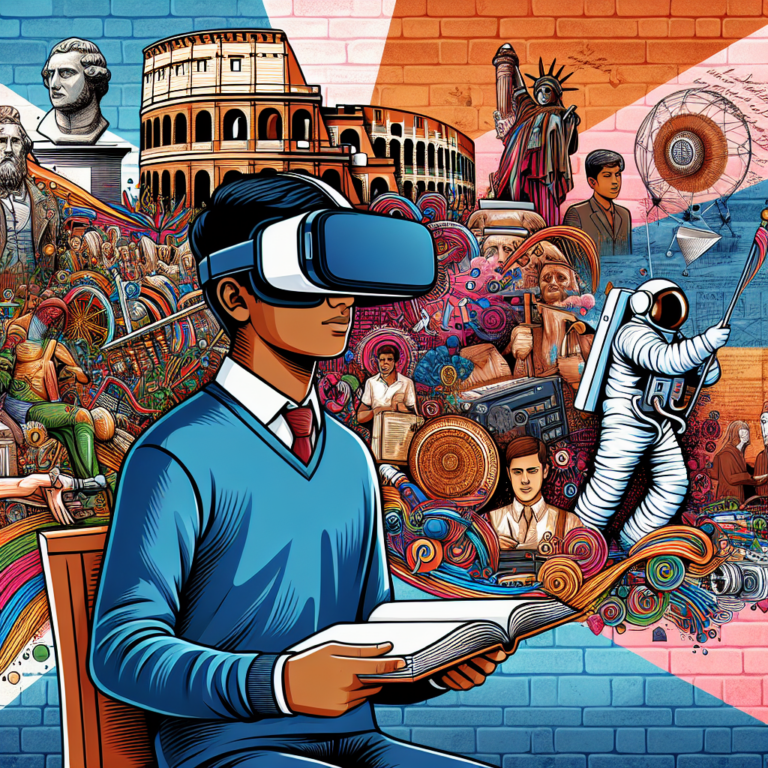Virtual Reality Education : The Power of Virtual Reality in Simulating Historical Events 🌍
A Journey Through Time
Virtual Reality Education : Imagine donning a VR headset and instantly finding yourself in the bustling streets of Ancient Rome, witnessing the grandeur of the Colosseum, or standing alongside soldiers during the pivotal moments of World War II. What if virtual reality could serve as a gateway to the past, enabling learners to step into historical events and gain a deeper understanding of their significance? This revolutionary idea is rapidly transforming educational practices, making history engaging and interactive.
The Evolution of Learning: From Textbooks to Virtual Realities
Virtual Reality Education : The traditional classroom experience often relies heavily on textbooks, lectures, and static content. While these methods have their merits, they can leave students feeling disconnected from the material. Enter virtual reality—an innovative approach that promises to redefine how we learn about our world’s history.
Benefits of Using VR in Education:
- Immersive Learning Experience: Virtual reality allows students to immerse themselves fully in historical settings, promoting a sense of presence that traditional methods lack.
- Enhanced Engagement: Interactive simulations can capture students’ attention more effectively, making learning feel like an adventure.
- Active Participation: VR encourages active engagement where learners can explore, inquire, and even influence events within a controlled environment.
- Retention and Recall: Immersive experiences have been shown to improve information retention, making it easier for students to remember historical facts and contexts.
Bringing History to Life: Key Historical Events to Simulate
There are countless historical events that would benefit from virtual reality simulations. Here are a few examples that could captivate students and educators alike:
1. The Signing of the Declaration of Independence
Step back to July 4, 1776, and be a part of the moment when America declared its independence. Imagine witnessing the debates and discussions in the Continental Congress and engaging with key figures like Thomas Jefferson and Benjamin Franklin.
2. The Great Wall of China Construction
Travel to ancient China and experience the monumental task of building the Great Wall. Students can understand the socio-political context, the sheer manpower involved, and the significance of this incredible feat.
3. The Apollo 11 Moon Landing
Take a giant leap for mankind and join Neil Armstrong and Buzz Aldrin as they make their historic journey to the moon. This simulation can provide insights into space exploration, the technology of the time, and the cultural impact of the moon landing.
4. The Civil Rights Movement
Walk alongside activists during the Civil Rights Movement in the 1960s, participating in peaceful protests and understanding the challenges they faced. Such a simulation can foster empathy and a deeper appreciation for social justice topics.
5. The Fall of the Berlin Wall
Experience the emotional moment when the Berlin Wall fell in 1989. This simulation can illustrate the power of unity, resilience, and change in history, offering students a profound understanding of its impact on modern Europe.
How VR Technology Works in Educational Settings
The mechanics of virtual reality in education:
- Headsets: VR headsets, like Oculus Rift or HTC Vive, create an immersive environment that transports users to different times and places.
- Interactive Content: Educational institutions partner with developers to create tailored experiences that align with their curricula.
- Multi-Sensory Learning: Many VR experiences engage multiple senses—sight, sound, and even touch—to enhance the learning experience.
- Accessibility: While the technology is still developing, there are initiatives aimed at making VR more accessible for schools, including lower-cost options and mobile VR solutions.
Challenges to Overcome
While the potential of virtual reality in education is vast, some hurdles need addressing:
- Cost: High-quality VR headsets and equipment can be expensive, posing a barrier for many educational institutions.
- Training: Educators may require training to effectively integrate VR into their teaching practices.
- Content Generation: Creating historical simulations demands collaboration between historians, educators, and developers to ensure accuracy and relevance.
- Technical Issues: As with any technology, technical issues can arise that may disrupt the flow of lessons.
The Future of History Education with VR
As technology advances and VR becomes more accessible, the future of history education looks promising. Teachers can create engaging, interactive lessons tailored to their students’ needs. Imagine a classroom where students can explore historical events from various perspectives, encouraging critical thinking and deeper comprehension.
By leveraging the unique capabilities of virtual reality, educators can ignite a passion for history that resonates with students long after the experience is over. With ongoing developments and growing interest in effective educational technologies, the time is ripe to explore the transformative power of VR in history education.
Explore the past like never before, foster a love for history, and empower future generations with tools that engage and inspire! 🚀




0 Comments